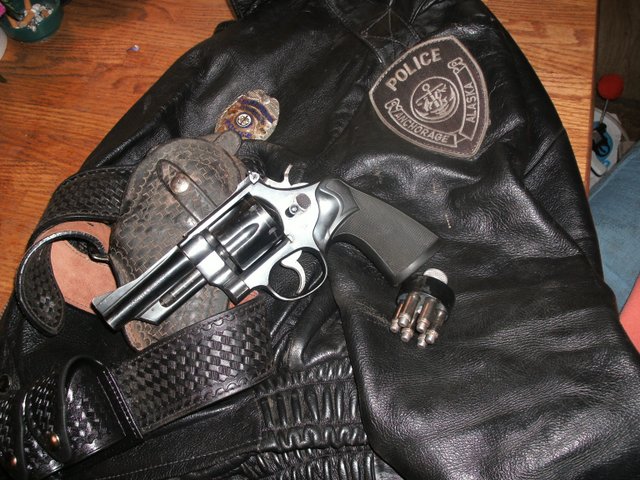RampantAndroid
New member
So I have some questions on wear on my revolver: I'm cleaning it now (gee, I need to clean more often - carbon buildup was a little much.)
First photo: where the cylinder slides in and out, the bluing is worn off, and you see a line there. This seems like something bound to happen - can anyone chime in on this?
Second and third photos: Both my M29 and M58 have this to some extent: the area right around the breach (don't know if my terminology is right here - the back side of barrel, where the gap between the barrel and cylinder is) is very rough. On the M29, the metal chipped on one side, on the outer edge. On my M58, it's just rough the whole way around. This doesn't look like led build up, but rather damage to the metal. Is this normal? My 41 magnum loads are a little hot, between 1500-1600 FPS - is this at fault? My 44 magnum loads are factory.
Edit: On the 44, the cylinder can rub when you close/open it, which MIGHT explain the damage in the third photo?
Fourth and fifthphotos: The front of the cylinder in the circled areas (all 6 of these) are turning a silvery color - on both guns. Is this just from the flash of the shot and regular wear? Did I not clean often enough? I can't get this off, not with hoppes at least.
Thanks!
First photo: where the cylinder slides in and out, the bluing is worn off, and you see a line there. This seems like something bound to happen - can anyone chime in on this?
Second and third photos: Both my M29 and M58 have this to some extent: the area right around the breach (don't know if my terminology is right here - the back side of barrel, where the gap between the barrel and cylinder is) is very rough. On the M29, the metal chipped on one side, on the outer edge. On my M58, it's just rough the whole way around. This doesn't look like led build up, but rather damage to the metal. Is this normal? My 41 magnum loads are a little hot, between 1500-1600 FPS - is this at fault? My 44 magnum loads are factory.
Edit: On the 44, the cylinder can rub when you close/open it, which MIGHT explain the damage in the third photo?
Fourth and fifthphotos: The front of the cylinder in the circled areas (all 6 of these) are turning a silvery color - on both guns. Is this just from the flash of the shot and regular wear? Did I not clean often enough? I can't get this off, not with hoppes at least.
Thanks!
Last edited:

